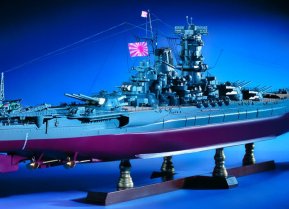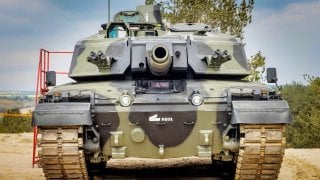Challenger 3 Main Battle Tank: Soon To Be the Best Tank on Earth?
Amidst a global arms race triggered by recent geopolitical events, the British military is advancing with the Challenger 3, an upgrade of the Challenger 2 tank, aimed at enhancing its future combat readiness.
Summary: Amidst a global arms race triggered by recent geopolitical events, the British military is advancing with the Challenger 3, an upgrade of the Challenger 2 tank, aimed at enhancing its future combat readiness. The Challenger 3 will retain a four-person crew but will be heavier and more robust, equipped with a new 120-mm L55A1 smoothbore gun and significant system updates including advanced sighting, improved engine and suspension, and enhanced communications. Spearheaded by Rheinmetall BAE Systems Land, the project emphasizes rigorous testing to refine its features, targeting initial operating capability by 2027 and full deployment by 2030. Additionally, combat data from Challenger 2 tanks deployed in Ukraine may influence the Challenger 3's development, ensuring it meets the demands of future mechanized warfare.
Challenger 3: Britain's Next-Gen Main Battle Tank Takes Shape
Major geopolitical events of the past couple of years are pushing militaries around the world into a minor arms race. As part of that race and in order to be ready for the future, the British military is working hard on its new upgraded main battle tank.
The Challenger 3 Main Battle Tank
As part of its modernization efforts, the British Army decided to upgrade a relatively small number (148) of Challenger 2 tanks into the Challenger 3.
The new tank will have a crew of four, maintaining the standard commander, driver, gunner, and loader composition (the U.S. Army is likely moving to a three-man tank in the future with artificial technology filling the gap).
In terms of weight, at 66 tons per tank, the Challenger 3 is looking to be heavier than its predecessor by 3.5 tons (the Challenger 2 weighs 62.5 tons). Interestingly, the British Army prefers a more robust superstructure that will be able to withstand more hits as opposed to a lighter and more mobile vehicle.
In terms of weaponry, the Challenger 3 will pack the new 120-mm L55A1 smoothbore gun, known as the L55A1CR3 in the British version, which will be capable of firing a wide range of munitions, such as standard, armor-piercing, and high-explosive.
As far as other system updates and new features, the Challenger 3 will include day and night primary sights for the commander and the gunner, a better engine and suspension, more protection for the turret, improved tactical communications, a stronger hull superstructure.
The new tank of the British Army is led by Rheinmetall BAE Systems Land, a joint venture with British and German flavor as BAE Systems is based in the U.K. and Rheinmetall in Germany.
In January, the companies behind the Challenger 3 released a picture of the prototype.
Data, Trials, and Testing
Right now, it’s all about data, trials, and testing to ensure that the intended technologies, sensors, and features work properly before mass production commences.
Rheinmetall BAE Systems Land has created a digital twin version of the Challenger 3 to test features, eliminate risk, and shorten the manufacturing and trial phases. Once trials have been completed, the program will move on to the system qualification review phase, where the final design and manufacturing standard of the main battle tank will be finalized. Then, full-scale production will begin. The British Army has ordered 148 Challenger 3 tanks. The program is projected to reach initial operating capability by 2027, and all tanks are planned to be in service with frontline units by the end of 2030.
However, the British military has another potential source of data to use in the development of its new main battle tank. London has sent approximately 14 Challenger 2 tanks to Ukraine. If the British Ministry of Defense uses the data from the fighting and casualties, it will even improve the new version of the tank.
It will be on the Challenger 3 main battle tank, Ajax infantry fighting vehicle, and Boxer armored personnel carrier to establish mechanized superiority on the future battlefield for the British military.
About the Author
Stavros Atlamazoglou is a seasoned defense journalist specializing in special operations and a Hellenic Army veteran (national service with the 575th Marine Battalion and Army HQ). He holds a BA from Johns Hopkins University and an MA from the Johns Hopkins School of Advanced International Studies (SAIS). His work has been featured in Business Insider, Sandboxx, and SOFREP. Email the author: [email protected].


